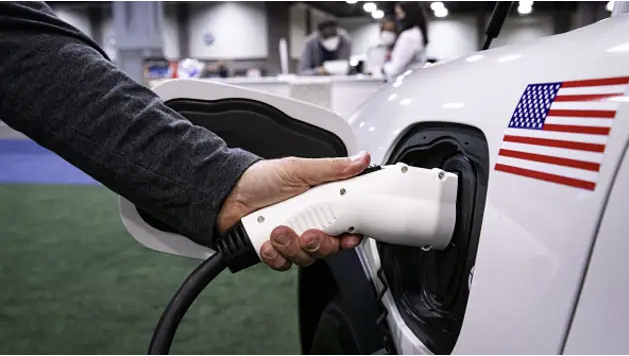Auto Expert Uncovers Hidden Truth About EV Range Claims – Owners Should Be Seething
< < Go Back
President Joe Biden’s administration wants the United States to cut carbon emissions in half by 2030 — and a big part of that plan involves a switchover to electric vehicles.
EVs, we’re told, are the way of the future. Gone are worries about “range anxiety,” we’re told. These vehicles can put in some serious miles on a single charge — and the government’s building more charging infrastructure along the highways every day.
Neil Winton, however, says that’s a load of hooey.
“A brand-new electric car is gleaming on your driveway and your first reaction is going to be excitement, followed perhaps by a smidgen of smugness,” Winton wrote in a Forbes piece last month.
The problem, Winton says, is that range numbers are derived from driving conditions divorced from real-world driving. Instead, they’re based on the computerized Worldwide Harmonized Light Vehicles Test Procedure, or WLTP — a laboratory test that aims to measure and standardize EV range numbers.
This means that the range you get could be, in real-world scenarios, up to 32 percent less than what’s promised. That’s the biggest deviation Winton found when he looked at 20 different EV models in a test published Tuesday.
Why? Well, if “you drive at normal cruising speeds with the air conditioning on, the media system doing its stuff and the heater making you snug,” it’s a drain on the battery that the manufacturer didn’t figure in when it calculated the vehicle’s range numbers.
EVs do worse than advertised on the highway for a number of reasons. For starters, electric motors are far more efficient in stop-and-go driving conditions than during highway driving, partially because of regenerative braking; EVs use the friction caused when you slow your car down to recharge the battery. Braking doesn’t happen much during highway driving, however, which is why the advertised range drops precipitously.
Then there’s the matter of cruising speed on the highway…
“Only real-world data should be used. The manufacturers must come clean about extended motorway fast-lane cruising,” he wrote.
“On most EVs this cuts range by between 30 and 50%. This must be conceded. The impact of cold weather on range can mean up to a 30% range cut. Similarly, the impact of full loads of people and luggage is a reality, and the necessity of regularly filling to only 80% of capacity to protect the life of the battery must be admitted.
The chances that this will happen are roughly the same as the chances you will get the advertised range out of an EV’s battery.
The electric car is inherently political. It’s a statement. For Democrats..
More From Western Journal:




